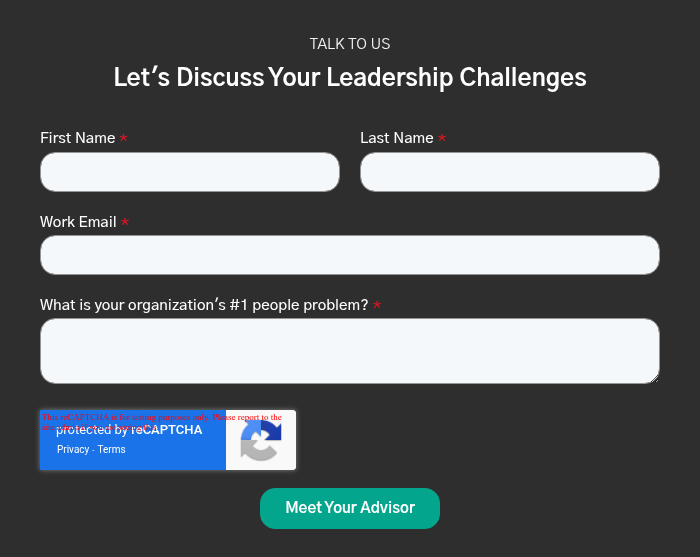The Cost of Waiting: Why Holding Out for the Perfect Hire Can Set You Back
October 22nd, 2025
4 min read
By John Gave

Six months had passed, and the position remained open. The CFO of a growing property management firm had been searching for a bookkeeper with an unusually long list of requirements: fluency in QuickBooks, advanced Excel skills, full-cycle accounting experience, financial analysis capabilities, and a deep understanding of real estate deal structures. Individually, none of these criteria were excessive. But combined, they created a near-impossible profile to find in a single candidate.
When asked why the position was still vacant, the CFO was clear: none of the applicants checked every box. She had seen candidates who met many of the requirements but lacked one or two technical skills. When asked to consider a different path—what if she had hired one of those near-fits three months ago and invested in targeted training—she paused. Then admitted, quietly, that she would be far ahead of where she was now.
This scenario is not uncommon. In fact, it’s one of the more overlooked causes of organizational drag. Leaders often aim to reduce hiring risk by ensuring each new hire arrives fully formed. Yet in the process, they delay essential progress, place excess burdens on existing team members, and miss out on high-potential talent who could easily close skill gaps with minimal investment.
In this article, you will learn:
Why Waiting for a Perfect Candidate Carries Hidden Costs
The Financial Impact of Leaving Roles Unfilled
Why Soft Skills and Learning Agility Should Drive Hiring Decisions
How to Evaluate Which Hard Skills Can Be Trained
How to Shift the Hiring Mindset Toward Long-Term Talent ROI
Why Waiting for a Perfect Candidate Carries Hidden Costs
Hiring is inherently a strategic decision. It is about meeting today’s needs while positioning the organization for future growth. Yet many leaders, especially in operational or financial roles, focus almost exclusively on minimizing short-term hiring risk. The assumption is by holding out for the perfect candidate, they reduce onboarding time, avoid training costs, and eliminate the risk of a bad hire.
What is often missed in this logic is the compounded cost of inaction. While the position remains vacant, someone else is doing the work. Often, that burden falls on high-performing team members whose time is already stretched. Projects get delayed. Errors increase. Morale declines. At a certain point, the operational cost of waiting outweighs the perceived risk of hiring someone with a few trainable gaps.
The Financial Impact of Leaving Roles Unfilled
Leaving a role open for months is not a neutral decision. It is a financial cost. The organization may resort to expensive contractors to fill in the gaps temporarily. High-level employees may spend time on work below their skill level, which reduces organizational efficiency. In some cases, the work simply does not get done. That leads to missed revenue, slower service delivery, or internal frustration.
Consider the property management client. Had the CFO hired a strong candidate with 80 percent of the required hard skills three months earlier, the cost of training would have been marginal compared to the cost of six months of delay. Real progress could have been made in closing the books faster, delivering better reporting, and strengthening internal controls.
Why Soft Skills and Learning Agility Should Drive Hiring Decisions
Most hard skills can be taught. Soft skills cannot. When evaluating candidates, organizations would benefit from prioritizing cultural fit, intellectual capacity, and the willingness to learn. These are the traits that sustain long-term performance. They also predict how well an individual will adapt to the changing needs of the business.
A candidate who has demonstrated strong analytical thinking, collaboration, and initiative, but lacks a specific software tool, is often a better long-term investment than someone who checks every technical box but struggles with communication or adaptability.
This is especially relevant in fast-growing or evolving businesses. Roles change. Processes shift. Software platforms get replaced. Hard skills become obsolete. What remains essential is the ability to learn, collaborate, and grow with the organization.

How to Evaluate Which Hard Skills Can Be Trained
Not all skills are equal in their ease of acquisition. A CFO hiring a bookkeeper must distinguish between skills that require years of experience and those that can be learned in a few weeks with the right support. For example, QuickBooks proficiency, while helpful, can often be acquired quickly by a seasoned accountant. Advanced Excel modeling may take longer but can be taught with structured support and practice.
Organizations should approach hiring decisions the same way they approach investment decisions: weighing short-term trade-offs against long-term returns. Training a strong candidate in one or two technical areas is a relatively small investment if the individual brings value in other critical areas.
How to Shift the Hiring Mindset Toward Long-Term Talent ROI
Strategic hiring requires a mindset shift. Instead of filtering for perfection, organizations should be optimizing for performance potential. This means defining the must-have skills that are truly non-negotiable and separating them from those that can be taught.
Hiring assessments can support this process. Tools that evaluate problem-solving ability, interpersonal effectiveness, and leadership potential are often better indicators of future performance than checklists of past experience. By focusing on cognitive and behavioral traits, companies can identify candidates with the capacity to thrive—even if they arrive with a few technical gaps.
More importantly, this shift reduces organizational drag. Leaders no longer wait passively for the market to deliver a unicorn. They take proactive steps to build the talent they need.
Takeaways
The pursuit of the perfect candidate often leads to unnecessary delay, increased costs, and missed opportunities. In today’s competitive environment, speed, agility, and adaptability matter more than exhaustive experience. Smart leaders prioritize culture fit, learning potential, and long-term alignment over a flawless résumé.
The Metiss Group helps organizations identify high-potential candidates who may not check every technical box but have the capacity to grow into the role. With the right leadership development, these individuals often outperform those who simply arrive with more experience.
Making a key hire is not about minimizing risk at all costs. It is about maximizing the organization’s ability to move forward. Sometimes the best hire is not the one who knows everything on day one, but the one who is most prepared to learn.
Topics:
